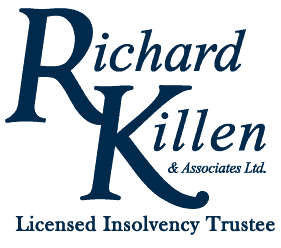What Too Much Debt Looks Like In The Greater Toronto Area
Posted on: September 9, 2019Posted in Bankruptcy, Debt | Comments Off on What Too Much Debt Looks Like In The Greater Toronto Area

According to Statistics Canada, Canadian families now roughly owe $1.78 for every $1 they earn. These debts include consumer credit, mortgage and non-mortgage loans. Yes, we’ve got too much debt and piled up credit card charges for home renovations and eating out, for long-term car loans to buy up new vehicles, and not to mention those home equity lines of credit that allowed us to borrow up to 65% of the value of our home.
Some of us are already feeling the pinch of owing too much debt, with almost a 10% increase in the number of consumer insolvencies compared to last year, according to the latest figures from the Office of the Superintendent of Bankruptcy Canada.
“Personal insolvency growth continues as a result of consumer credit stress, individuals and families are struggling with overwhelming debts,” says Chantal Gingras, Chair of the Canadian Association of Insolvency and Restructuring Professionals (CAIRP).
And it seems we’re not slowing down. Despite years of counselling from the Bank of Canada against rising debt levels, many Canadians still aren’t lightening their debt load even though interest rates are rising and borrowing costs are climbing.
“Oh, we can manage our payments, we’re all good,” we keep saying. At least for now you can, but all that can change with a few unexpected calamities.
“If there is a period of slow economic growth in the future, Canadians could face job losses or decreased income putting them in an even worse position to manage their increasing debt levels,” says Scott Hannah, the Founder of the Credit Counselling Society.
Look, we all want to have a new car, a new home, dine in fine restaurants and enjoy luxury vacations, and grand shopping sprees. Who doesn’t, right? It’s great if we can afford them, there’s absolutely nothing wrong with spending on these things — as long as we don’t swim in debt for them.
But how exactly do you figure out that you’re close to being in over your head with too much debt? Let’s take a look at what too much debt looks like:
What Too Much Debt Looks Like to Lenders
In general, banks and other lenders look at your Total Debt Service Ratio, or TDSR, which is the portion of your income needed to cover all of your debts. Lenders will look at all of your monthly debt payments plus heating costs and taxes if you own your house and divide this by your gross income. Standard TDSR should not be higher than 40% of your income. So when you add up all your monthly credit card payments (minimum or partial payments each month), line of credit payment, car payment, mortgage payment, alimony and payments for heat and taxes, the total amount of all of these should not be more than 40% of your monthly gross income (which is your income before taxes). In other words, banks will not lend you money if your TDSR exceeds 40%.
If you are applying for a mortgage, lenders will also take into consideration your Gross Debt Servicing Ratio or GDSR in addition to your TDSR. GDSR is the portion of your gross income that goes towards paying all of your monthly housing costs, which can include principal mortgage payment, interest, property taxes, and heating costs (PITH) plus+ 50% of condo fees if applicable. The standard is less than 32%. Lenders will not give you a mortgage if your GDSR is more than 32%.
What Too Much Debt Looks Like to Your Budget
First order of business, ask yourself: How much do you need to live a lifestyle that is comfortable and acceptable to you? For this, you need to figure out the amount of money you need to support your way of living now as well as allow you to save for the future.
Identify all your sources of income – take home pay and extra income from a side job.
Calculate the cost of living expenses (also called non-discretionary expenses) – jot down every cent you spend that you must pay each month, including food, rent, mortgage, utilities, credit card payments, car loans, insurance payments, taxes and personal necessities
Calculate financial goals – amount for investing or saving after paying all non-discretionary expenses
Calculate discretionary expenses – amount for spending on non-essential items, restaurant dining, vacation expenses, luxury clothes, entertainment, etc.
Obviously, if you have no money remaining after paying bills then your income cannot support your financial goals as well as your unnecessary spending habits. If you must incur debt to pay for discretionary expenses, then you have too much debt.
If you routinely carry on debt, use your credit cards to pay for grocery bills or other utilities, constantly overdrawing your line of credit account or go overboard with an overdraft, and always have to take on a payday loan or a consolidation loan, these are warning signs that your budget is too tight and that you may have too much debt and may be heading for trouble.
Budgeting is really one of the smartest things you can do to keep yourself from accumulating too much debt. A budget will help you manage your finances and help you see how much debt you can afford to make payments on based on your income each month. It can really help you to live within your means and not spend more than you earn.
Too much debt can mean different things to different people, but the key is to figure out the amount of debt you have to how much money you make a month. The general rule is that your debt level should not be more than 40% of your monthly income.
Use the guidelines:
Total Debt Service Ratio (TDSR) over 40% = too much debt
Gross Debt Service Ratio (GDSR) over 32% = too much debt
Personal budget – more than half of your income is used to pay your debts = too much debt
Ideally, the less debt you owe, the better off you are. A little bit of debt is unavoidable, even necessary, to help you meet financial goals. Always live with a spending plan so you can manage debt payments efficiently and avoid going into too much debt. If your budget is too tight, you are close to the edge of having too much debt. When a financial crisis hits you, your budget is wiped out and you’ll be forced to take on debt for everything you need to pay for. Tap on all the resources you can to get back in control right away before your debt levels get out of hand.
When your debt and bills exceed your income, needless to say, you’re in a debt crisis and you need to make a committed decision to get out of debt without delay. Check out your debt solutions and options here.










